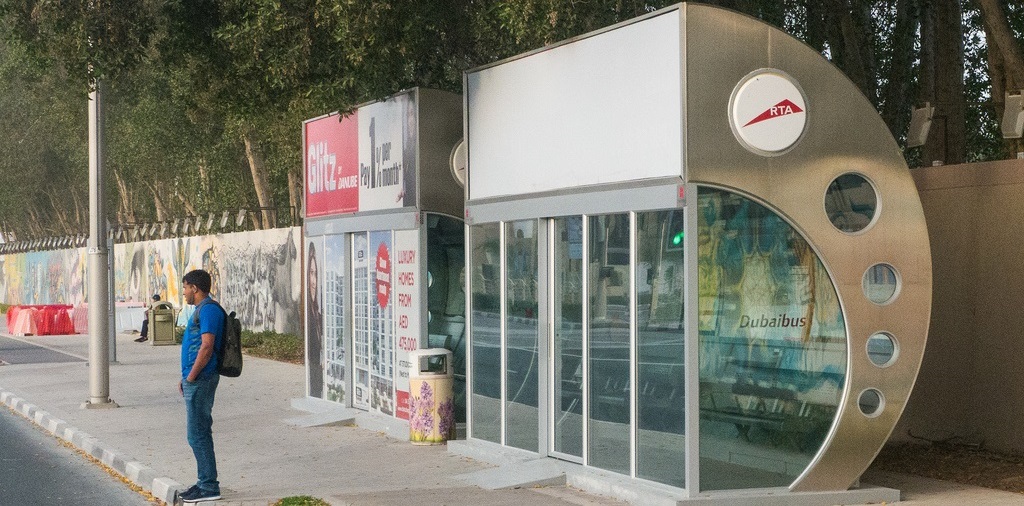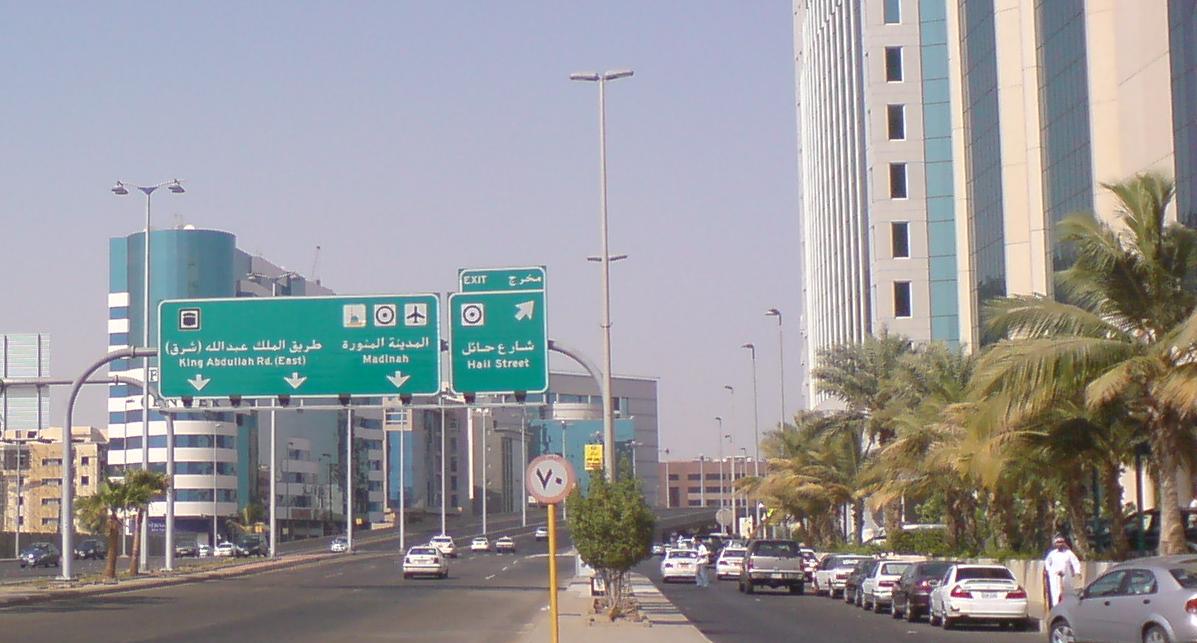
With temperatures often exceeding 110 degrees Fahrenheit, Dubai relies heavily on air conditioning – and even cools its bus stops [Photo: Fabio Achilli/Flickr]
On October 15, in Kigali, Rwanda, more than 170 countries signed a legally binding accord to phase out the use of hydrofluorocarbons (HFCs), a powerful greenhouse gas commonly used in air conditioners and refrigerators. The deal could stop the equivalent of 70 billion tons of carbon dioxide from being emitted into the atmosphere, approximately twice the amount currently emitted by the world each year.
But for many countries in the Middle East – where this summer a heat wave caused temperatures in Kuwait and Iraq to soar to a sweltering 129 degrees (54˚ Celsius) – the accord could pose a quandary. On the one hand, efforts to fight global warming could limit the expected increase in extreme heat waves and droughts in the Middle East. But on the other hand, the accord will force countries in the region, many of which are developing economies, to find alternative, possibly more expensive methods of cooling.
Last year, the demand for air-conditioning units in the Middle East was 5.4 million, and about 40 percent of this was in Saudi Arabia alone, according to the Japan Refrigeration and Air Conditioning Industry Association’s statistics. On a per capita basis, A/C demand in the region is far lower than in the United States, but higher than in both Europe and South Asia. Demand is only expected to grow in the Middle East, as temperatures warm and economies develop.
A/C alternatives
HFCs came into widespread use in the 1980s after the Montreal Protocol was signed, an international agreement limiting the use of two other chemicals, chlorofluorocarbons (CFCs) and hydrochlorofluorocarbons (HCFCs), which depleted the level of ozone in the atmosphere. HFCs were developed as an alternative to these chemicals. Now, the Kigali deal will replace HFCs with a more environmentally friendly set of coolants.
These alternative chemicals will have to be approved on a case-by-case basis, evaluating each chemical’s toxicity and its various applications. The United States Environmental Protection Agency (EPA) has approved propane, isobutane, and a compound called R-441A as coolants for households and small businesses, among other substitutes.
While there are many available alternatives to HFCs, there are several barriers to adopting them. Many alternative chemicals are flammable, and although these are allowed under the Kigali deal, new regulations will need to be developed to ensure safe use. Additionally, replacing air conditioning equipment is often necessary when switching from HFCs, which could be a costly and time-consuming process. The Kigali deal attempts to address this issue by having wealthier countries help finance the replacement of equipment in poorer countries.
Another potential option for phasing out HFC use is bypassing high-energy air conditioning systems altogether, through the use of passive cooling systems. These already exist in many developing countries, including Egypt and Iran, and use technologies such as water evaporation and wind towers, along with architectural features that allow for ventilation.
Solar adsorption cooling, which uses the heat of the sun to cool indoor air, is another system that has strong potential, especially in the sunny Middle East. However, this technology is still expensive and difficult to adapt for home use. Furthermore, passive cooling technologies cannot generate the level of cool, dry air produced by high-energy air conditioning systems.
A surge in ‘climate refugees’?
The Kigali deal places countries into three groups, giving some states a longer time to phase out use of HFCs depending on their wealth and climate. Wealthy countries such as the United States and all EU member states are required to begin phasing out HFC use by 2018. A second group must begin the process by 2024, while a smaller group of the world’s hottest countries – including most of the Middle East, as well as India and Pakistan – will not have to begin phasing out HFC use until 2028. Many of these countries were reluctant to sign the accord, as their current refrigeration and cooling systems rely on HFCs. The new accord will require upgrading technologies and replacing factories and equipment.
However, Habiba Al Marashi, a chairperson of Emirates Environmental Group (EEG), a UAE-based environmental non-profit, saw the deal as a positive development for the Middle East. She said the group “greatly welcomes the unified resolve that has been demonstrated in the signing of the deal to phase out the use of hydrofluorocarbons,” adding that “EEG hopes that our governments will acquire the financial and technological capabilities required for the transformation.”
“The projections for our region indicate dire conditions, from accelerating heat waves to dust storms, drought water scarcity, et cetera. The wider implication of these developments on a growing population is no less stark, and threatens a groundswell of climate refugees,” said Al Marashi.
Indeed, the issue of “climate refugees” – environmental migrants displaced by extreme weather or sea-level rise – has been a growing focus of humanitarian groups and international organizations, as researchers have estimated that the number of people displaced from their homes due to climate and weather-related disasters will dramatically increase over the next several decades. The International Organization for Migration predicts that there could be anywhere between 25 million and one billion environmental migrants by 2050.
Considering that the number of refugees worldwide is at an all-time high, many of whom are from the Middle East, figuring out how to classify and support people who migrate as a result of climate change will be a key focus for future policy-makers. In the meantime, preventative measures such as the Kigali Deal could be essential if the region hopes to avoid the worst consequences of climate change.
